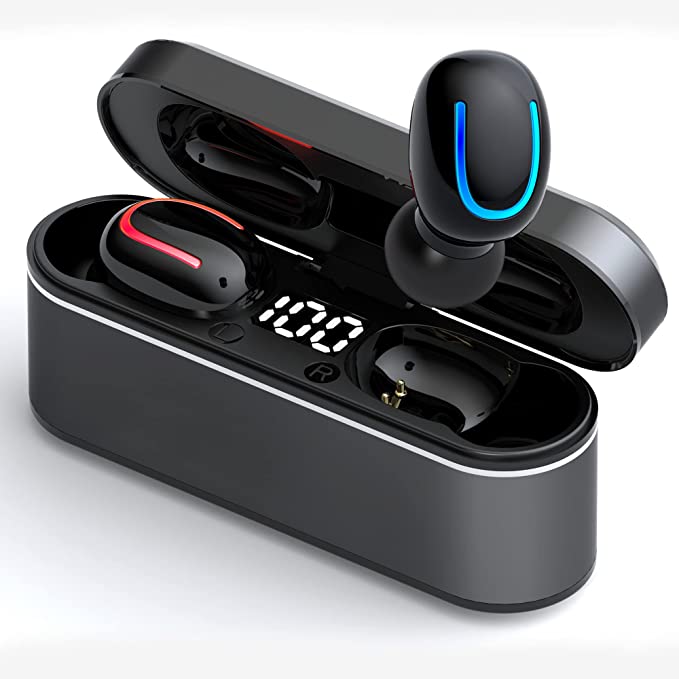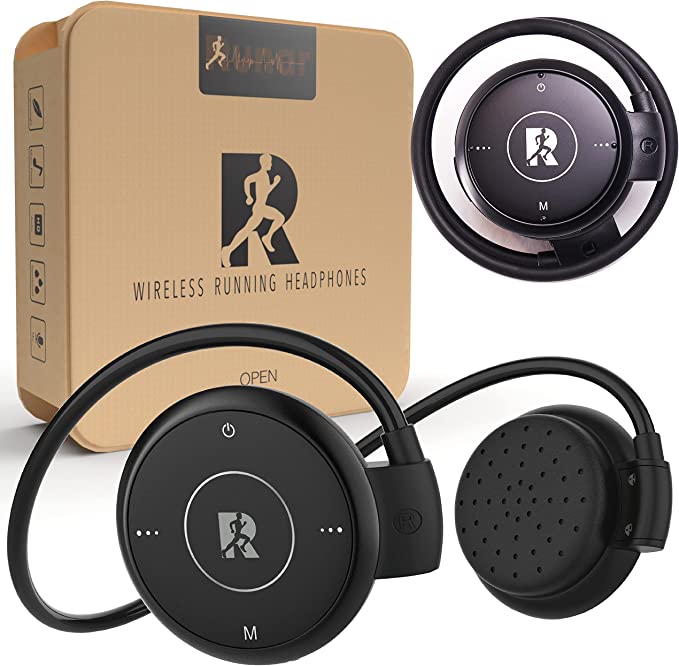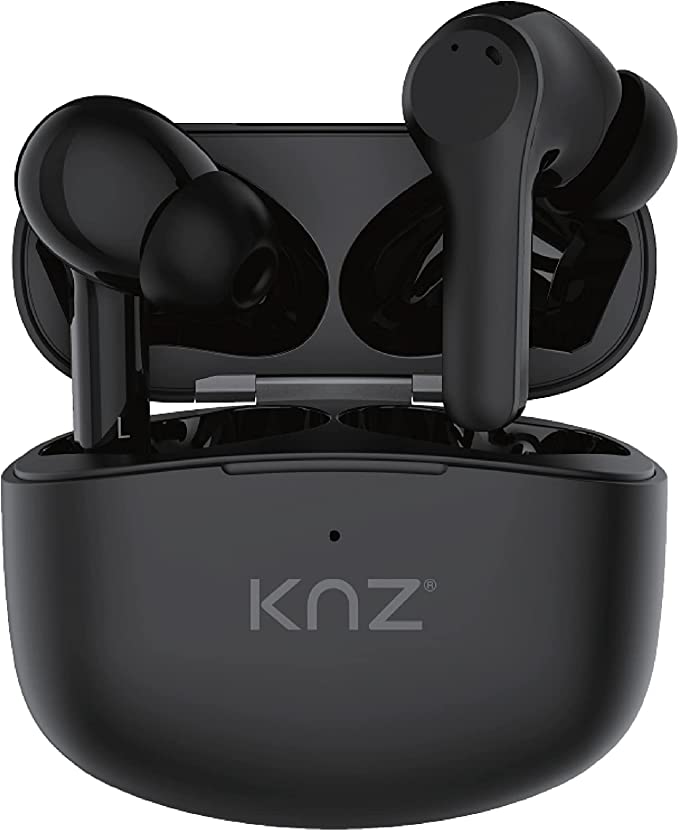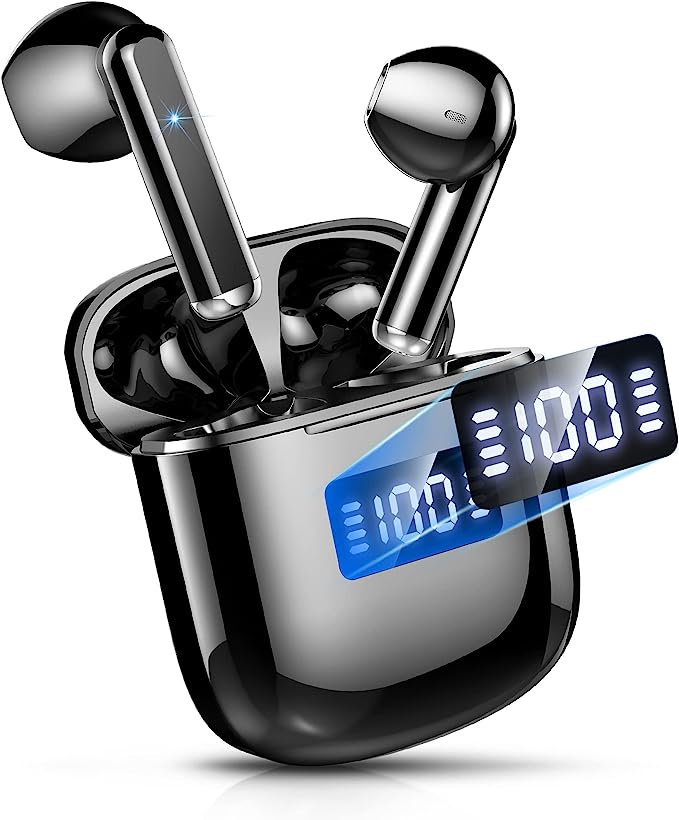The Missing Manual: How to Master Your KVIDIO WH304 Headphones (and All Their Features)
Update on Oct. 30, 2025, 8:20 a.m.
So, you just got a new pair of Active Noise Cancelling headphones, perhaps the KVIDIO WH304. You’ve unboxed them, felt the soft earpads, and seen the buttons. And then you looked at the tiny, folded paper manual… and probably felt a little lost.
Let’s fix that.
Welcome to the guide you should have received. This isn’t a review to sell you something; you already have the tool. This is your masterclass on how to use that tool. We’ll use the WH304 as our example, but these principles apply to many modern headphones. My goal is to take you from “user” to “master” in the next few minutes.
Let’s start with the most important button.
Part 1: The Two Magic Modes (and When to Use Them)
Your headphones have a powerful feature, likely controlled by a single “ANC” button. But it’s not just an on/off switch; it cycles between three distinct modes: ANC On, ANC Off (Standard), and Transparency Mode. Understanding the difference is the key to loving your headphones.
What is Active Noise Cancellation (ANC)?
Let’s get this straight: ANC is not soundproofing. It’s ‘anti-noise.’
Imagine a tiny microphone on the outside of your earcup listening to the world. It hears the low, steady drone of a plane engine or an office air conditioner. It then instantly creates an opposite sound wave (an “anti-noise” wave) and plays it into your ear.
The original drone and the new “anti-noise” wave meet, and poof—they cancel each other out. It’s magic, but it’s physics.
When to Use ANC: * Commuting: It’s brilliant for erasing the rumble of a train, bus, or airplane cabin. * At the Office: It filters out the hum of the AC, computer fans, and distant chatter, letting you focus. * At Home: Perfect for blocking out a noisy dishwasher or fan while you’re trying to read or work.
When Not to Use ANC (A Pro Tip): * In High Wind: The wind rushing over the external microphone can confuse the ANC chip. Instead of cancelling the wind, the headphones might actually amplify it, creating a “whooshing” sound. In this case, just turn ANC off. * To Save Battery: ANC is an active process. The product data for the WH304 is a perfect example: it boasts 65 hours of playtime in standard mode, but this drops to 40 hours with ANC on. If you’re just listening in a quiet room, turn ANC off and enjoy the extra 25 hours.

What is Transparency Mode?
This is the feature you’ll grow to love. If ANC pushes the world out, Transparency Mode intentionally pulls the world in.
It uses those same external microphones but, instead of creating “anti-noise,” it simply passes the outside sound through to the speakers. It’s like giving yourself a set of bionic ears.
When to Use Transparency Mode: * Ordering Coffee: No more awkwardly taking one earcup off. Press the button, order your latte, and hear the barista perfectly. * For Safety: Walking or jogging near traffic? Transparency Mode lets you enjoy your podcast while staying aware of your surroundings. * At the Train Station: You can listen to music at a low volume and still hear the platform announcements clearly. * Working from Home: You can focus on your music but still hear if someone in the next room calls your name.
Part 2: Mastering Your Controls (The “Manual” Section)
Now for the buttons. Most of the frustration with new headphones comes from not knowing the “secret” combinations. Let’s demystify them.
The “MFB” (Multi-Function Button)
This is the “main” button, usually the one between the volume rockers. * Play/Pause: One simple press. * Answer/End Call: One press. * Reject Call: Press and hold for 2 seconds. * Next Track: Press and hold the Volume + button. * Previous Track: Press and hold the Volume - button. * Activate Voice Assistant (Siri/Google): This is a great one. The WH304 manual notes you should double-press the MFB. You can then say “Call mom” or “What’s the weather?” without touching your phone.

How to Pair Your Headphones (and Fix Connection Problems)
This is the #1 problem new users face.
First-Time Pairing:
1. Make sure the headphones are off.
2. Press and hold the Multi-Function Button (MFB) for about 5-7 seconds.
3. You will hear “Power on” and then, a moment later, “Pairing.” The LED light will flash red and blue.
4. Go to your phone’s or laptop’s Bluetooth menu and select “KVIDIO WH304.” You’re done.
The “Why-Won’t-It-Connect” Pro-Tip (The Real Manual):
Here’s the scenario: Your headphones are connected to your laptop, and now you’re trying to connect them to your phone, but your phone can’t find them. This is because they are still actively paired to the laptop.
You have two options:
1. The Easy Way: Go to your laptop and manually “Disconnect” the WH304. Your headphones will re-enter pairing mode.
2. The “Clear-All-Pairings” Trick: This is the factory reset, straight from the manual (Note3). If your headphones are on and you’re totally stuck, press and hold the “Volume -” button and the middle MFB button at the same time for 5 seconds. This will clear all paired devices and put the headphones back into pairing mode. This is the ultimate “fix-it” trick.
Your headphones likely support connecting to two devices at once. Simply pair with the first device (e.g., your laptop), then disconnect it, pair with the second device (e.g., your phone), and finally, go back to your laptop’s Bluetooth list and just click “Connect.” They should now be linked to both.

Part 3: The “Gotchas” — Battery, Charging, and Wires
These are the final “mentor tips” that will save you from future confusion. They are almost always hidden in the fine print of the product page.
1. The Microphone ONLY Works in Bluetooth Mode
You’re about to join a Zoom call. Your battery is low, so you smartly plug in the included 3.5mm audio cable. The audio works great, but… nobody can hear you.
This is not a defect. This is by design. For the KVIDIO WH304 and many headphones like it, the built-in microphone only functions when connected via Bluetooth. The 3.5mm cable is for listening only. If you need to use the mic, you must be in wireless mode.
2. The USB-C Cable is ONLY for Charging
You see the USB-C port and think, “Great, I can plug this into my computer for audio.” You plug it in… and nothing happens, except the charging light comes on.
Again, this is normal. The USB-C port on this device is only for power. It does not transmit audio data. Your two connection methods are Bluetooth (wireless) or the 3.5mm audio cable (wired listening).

3. Understanding “Quick Charge”
The WH304 specs promise “a quick 5-minute charge offers 4H playtime.” This is fantastic, but it only works as advertised when the battery is nearly empty. It’s an intelligent system designed to get you up and running fast from 0%. It won’t charge that fast when the battery is already at 80%. So, if you’re in a hurry, a 5-minute charge from a dead battery is your best friend.
You’re No Longer a Beginner
That’s it. You’ve now graduated from being a simple “user” to someone who truly understands their device.
You know that ANC is for drones, not shouts. You know that Transparency Mode is for safety and convenience. You know how to clear a fussy Bluetooth pairing and you know why your mic “breaks” when you plug in the audio cable.
These aren’t just headphones anymore. They’re a tool you’ve mastered. Enjoy the quiet.






























